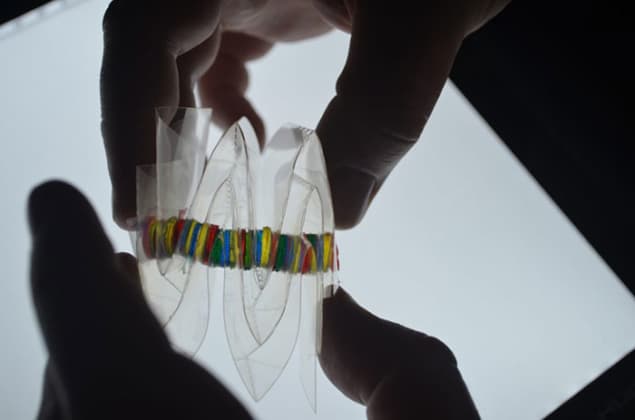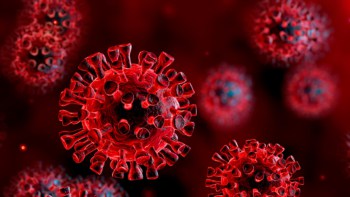
An energy source inspired by the electric eel has been created by researchers in Switzerland and the US. The system mimics the thousands of thin “electrocyte” cells found in the animal, which it uses to generate as much as 100 W of electrical power to defend itself as well as to locate and stun prey. Its inventors say that the source could someday power medical implants and soft robots.
The electrocytes in an electric eel are found in organs that run along the length of the fish, which lives at the bottom of rivers and lakes in South America. Separated by insulating layers, each electrocyte stores energy through a biochemical process that pumps positive sodium and potassium ions out of the structure. Each cell has an electric potential of about 150 mV.
Stacked in series
An electric discharge occurs when ion channels are opened, allowing the ions to flow back into the electrocyte. Given that an electric eel has thousands of electrocytes stacked in series, this animal can create a potential as high as 600 V along its length. Ion currents of up to 1 A flow from the fish’s head, around the body and back to its tail.
The new power supply was made by Thomas Schroeder, Anirvan Guha, Michael Mayer and colleagues at the University of Fribourg, University of Michigan and University of California, San Diego. The team mimicked the layered structure of an electric eel’s electrocyte by making a sheet covered in an array of droplets of four different gel-like materials. Some droplets contain sodium and chlorine ions, whereas others contain pure water. A third type of droplet conducts sodium ions but not chlorine ions, whereas the fourth type conducts chlorine ions but not sodium.
Astrophysical origami
To ensure that the system discharges in a controlled manner, the team borrowed a technique from origami called the “Miura fold”. This was invented by a Japanese astrophysicist and is often used to create satellite solar panels that unfold in space. They laser-scored the sheet so it can be folded in such a way that the different droplets come together in a very precise order that causes the sodium and chlorine atoms to move between droplets much like the sodium and potassium ions in the electric eel.
The new material can generate an electric potential of 110 V and a power of 27 mW per square metre. “The electric organs in eels are incredibly sophisticated; they’re far better at generating power than we are,” admits Mayer. The team is now working to improve the performance of the system.
The power supply is described in Nature



